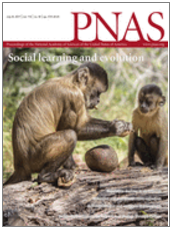Paper by Prof. Kitayama, Dr. Yanagisawa, Dr. Uchida and Dr. Abe Published in PNAS
The research paper “Reduced Orbitofrontal Cortical Volume is Associated with Interdependent Self-Construal” by Prof. Shinobu Kitayama, Dr. Kuniaki Yanagisawa, Dr. Yukiko Uchida, and Dr. Nobuhito Abe was published in PNAS (Proceedings of the National Academy of Sciences).
The research used a neuroimaging analysis technique called Voxel-Based Morphometry (VBM) examine whether structural properties of the brain predict interdependent self-construal.
The results showed that interdependent self-construal is highest in people who have relatively low orbitofrontal cortical volume and are also high in object imagery.
 Kitayama S, Yanagisawa K, Ito A, Ueda R, Uchida Y, Abe N (2017)
Kitayama S, Yanagisawa K, Ito A, Ueda R, Uchida Y, Abe N (2017)Reduced orbitofrontal cortical volume is associated with interdependent self-construal
Proceedings of the National Academy of Sciences of the United States of America 114 (30): 7969-7974
http://www.pnas.org/content/114/30/7969.abstract ※with Authentication
●Abstract
Interdependent self-construal refers to a view of the self as embedded in relationships with others. Prior work suggests that this construal is linked to a strong value placed on social obligations and duties. Interdependent people are therefore cognitively attuned to others and various social events in their surroundings while down-regulating their personal goals. In the present work, we examined whether structural properties of the brain predict interdependent self-construal. We performed a structural magnetic resonance imaging on 135 Japanese young adults while assessing (i) independent and interdependent self-construals and (ii) the degree to which individuals form vivid images of external objects (object imagery). The cortical volume of the orbitofrontal cortex (OFC) (a core cortical region responsible for value-based decisionmaking and, thus, inherently involved in personal goals and desires) inversely predicted interdependent self-construal. Further analysis found that the highest level of interdependent self-construal is achieved when those who are relatively low in the OFC volume are simultaneously high in object imagery, consistent with previous evidence that interdependence, as realized via obligation and duty, requires both the reduced self-interest and vigilant cognitive attunement to environmental context.
KEYWORDS: interdependence, orbitofrontal cortex, self-construal, voxel-based morphometry
2017/09/13